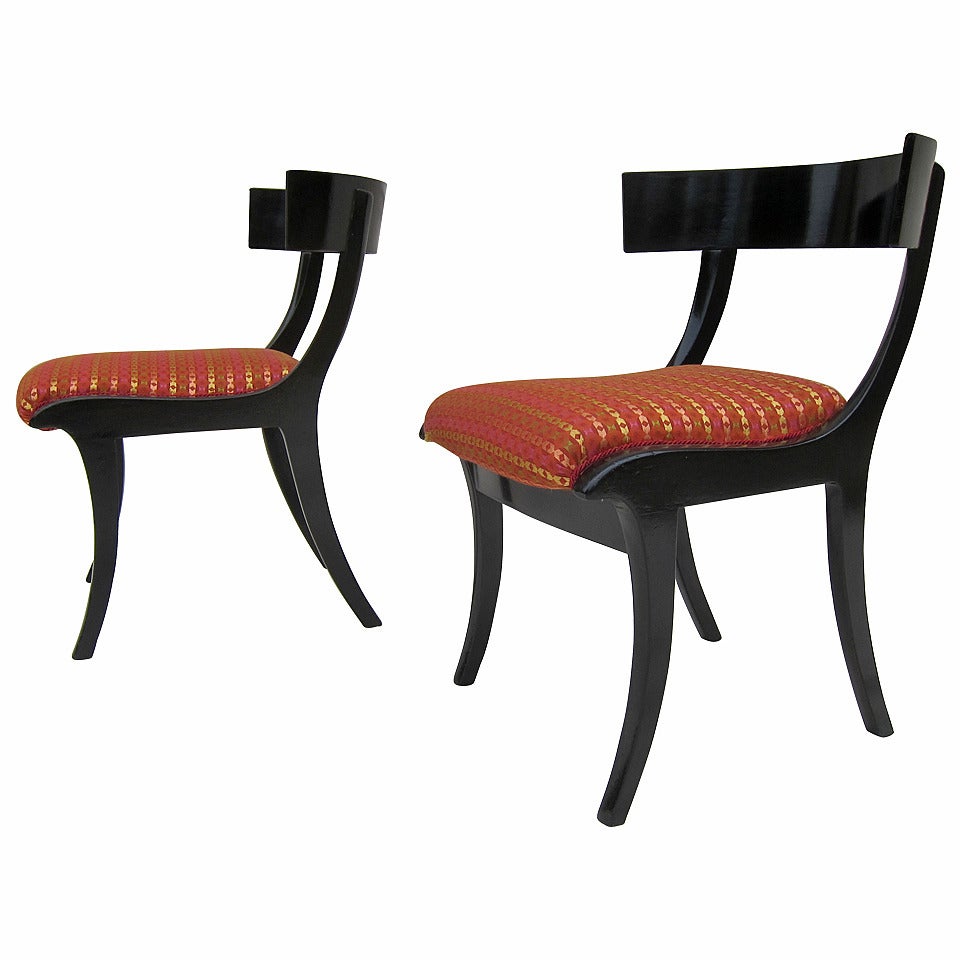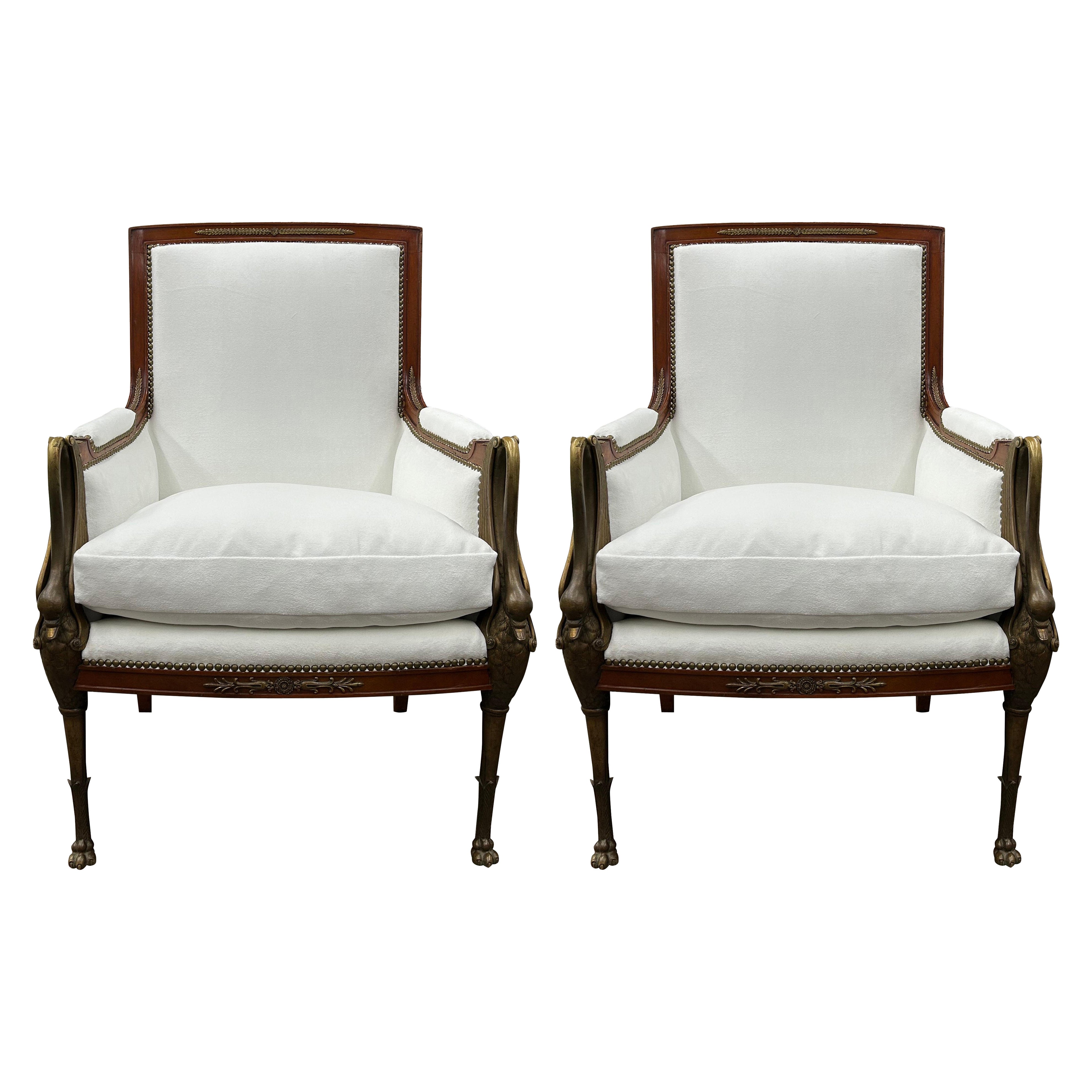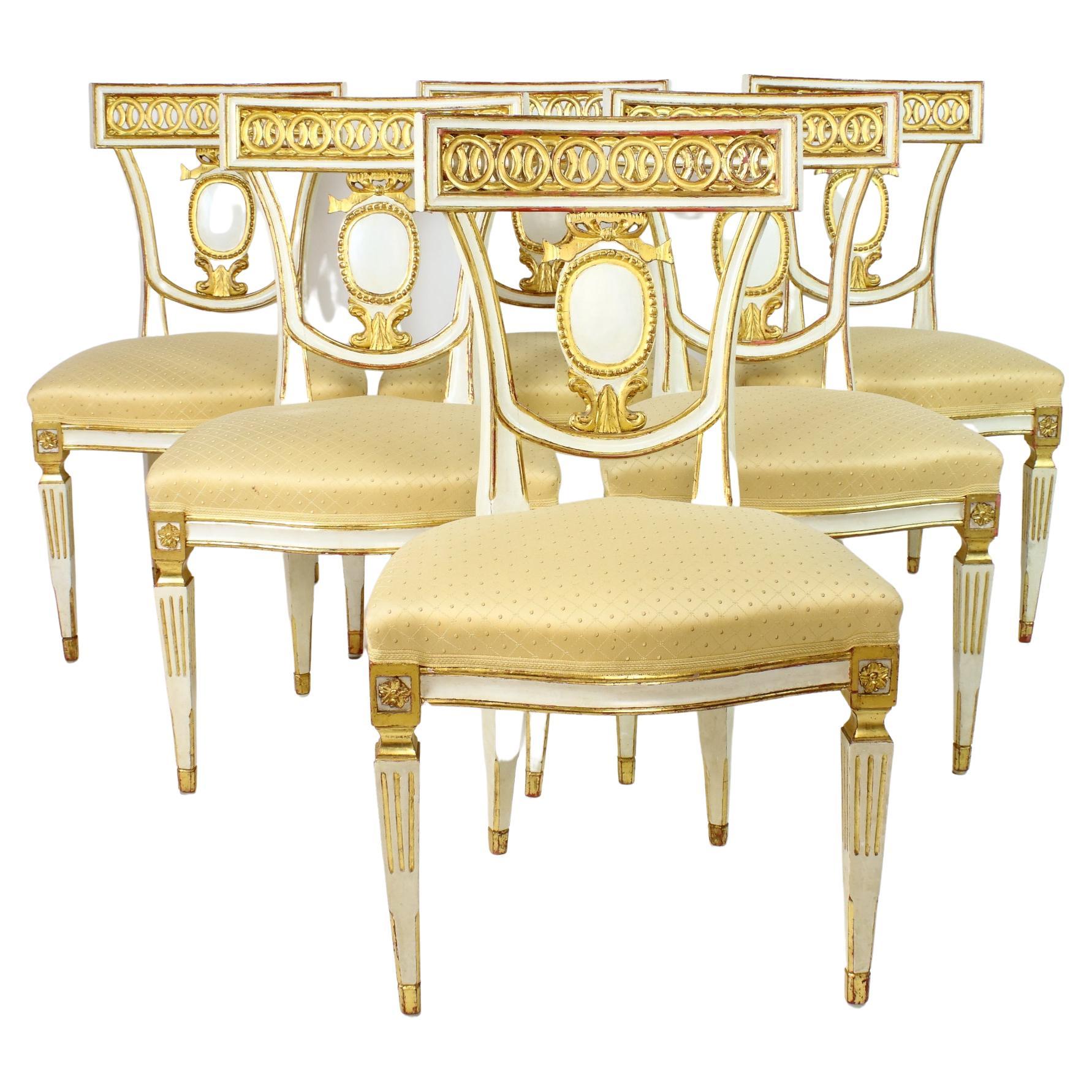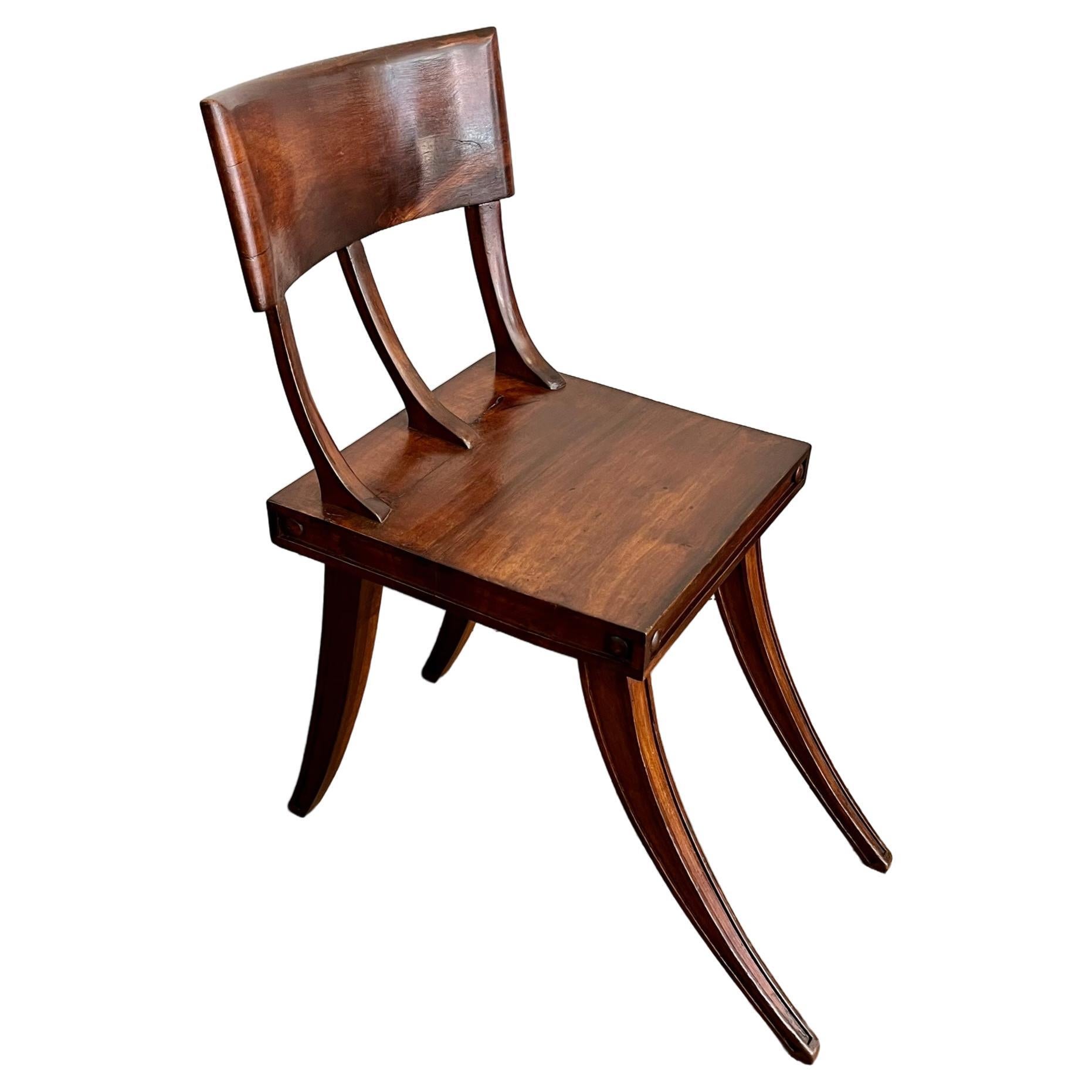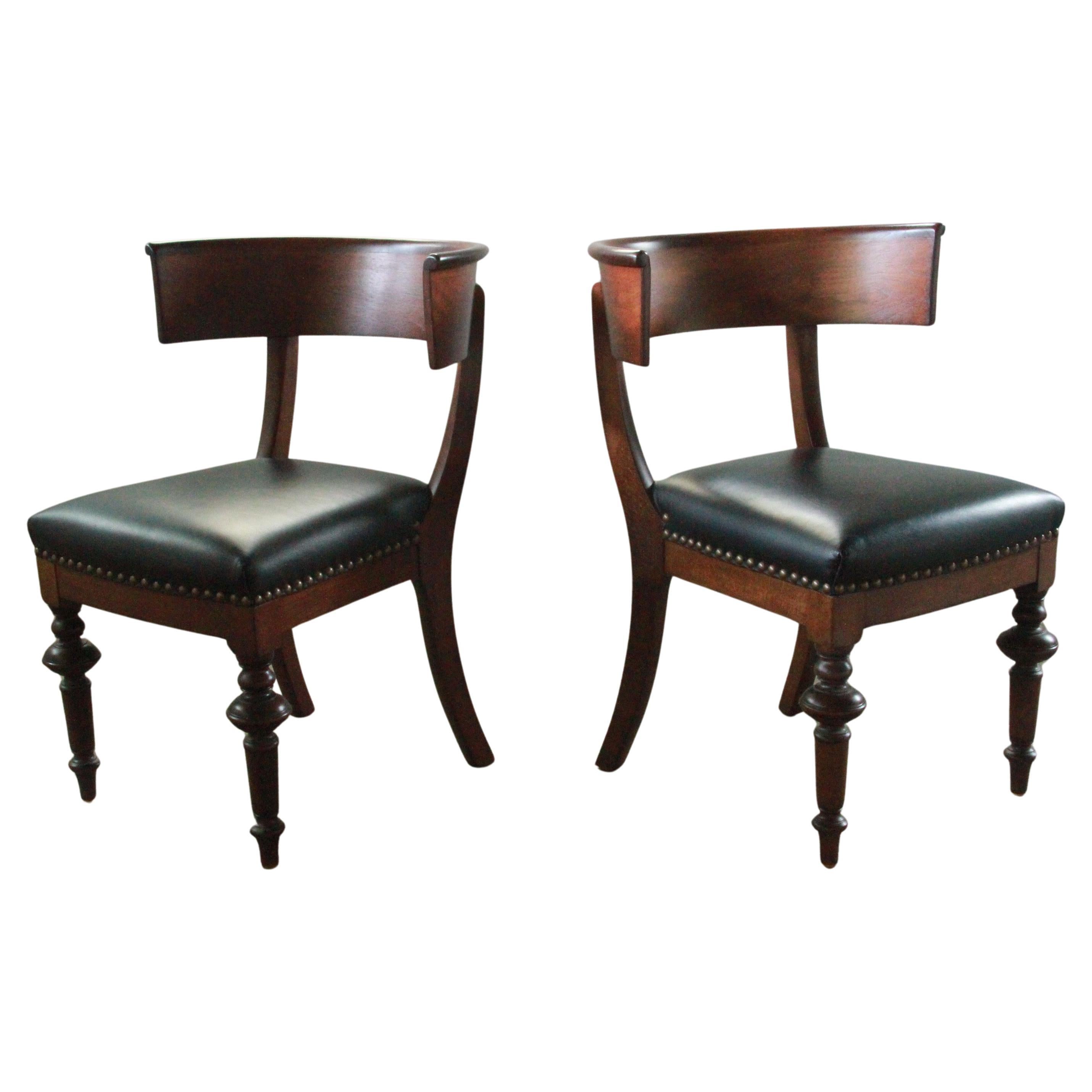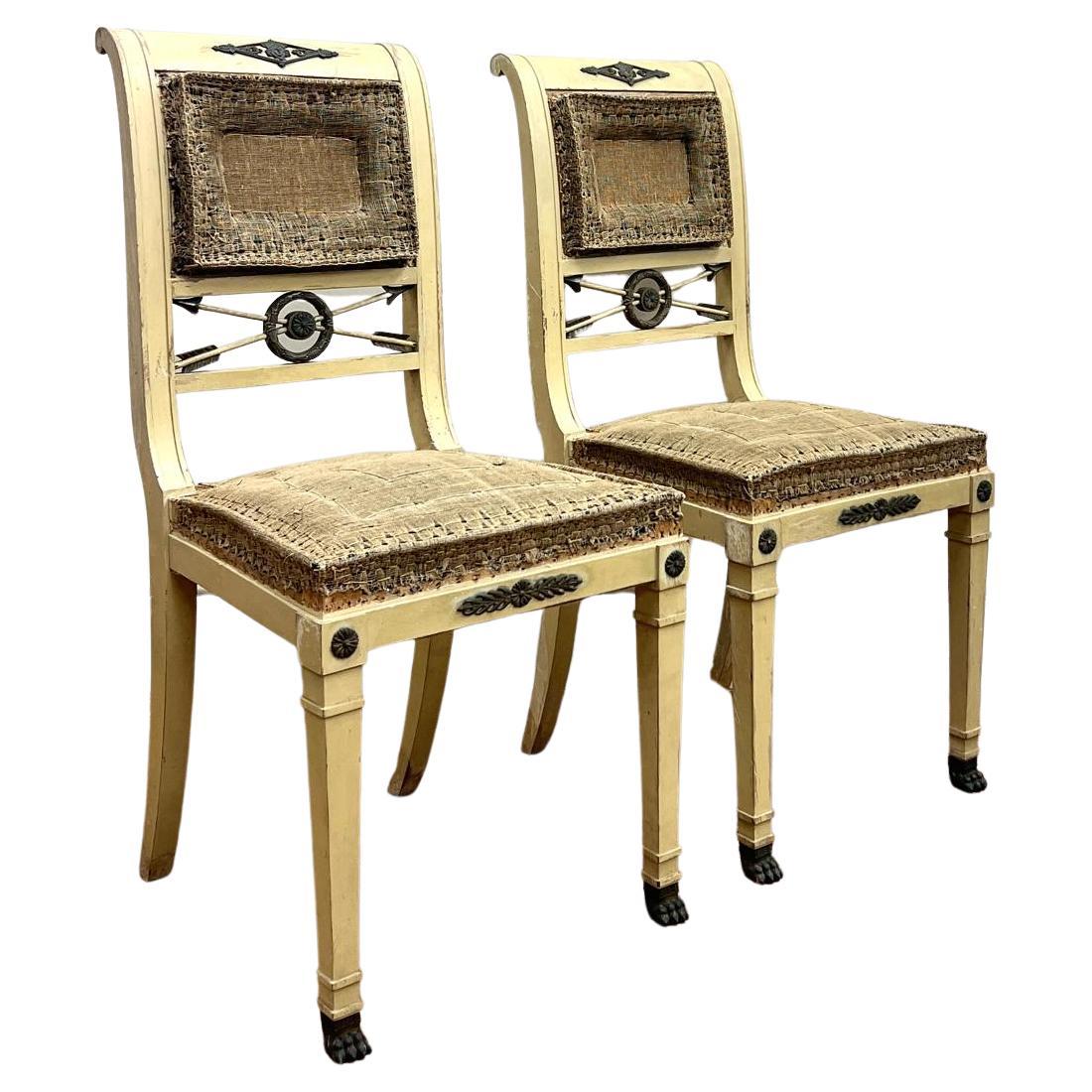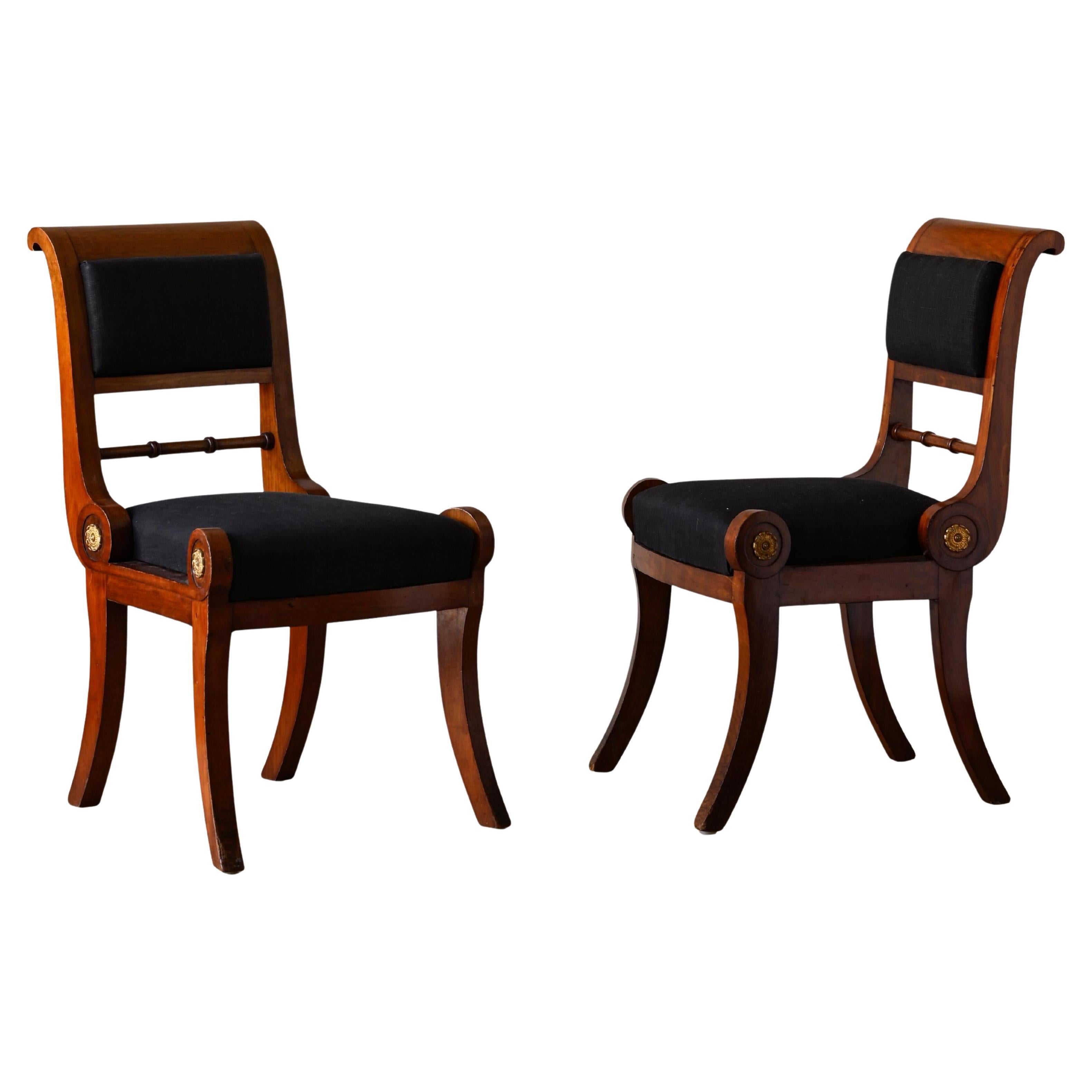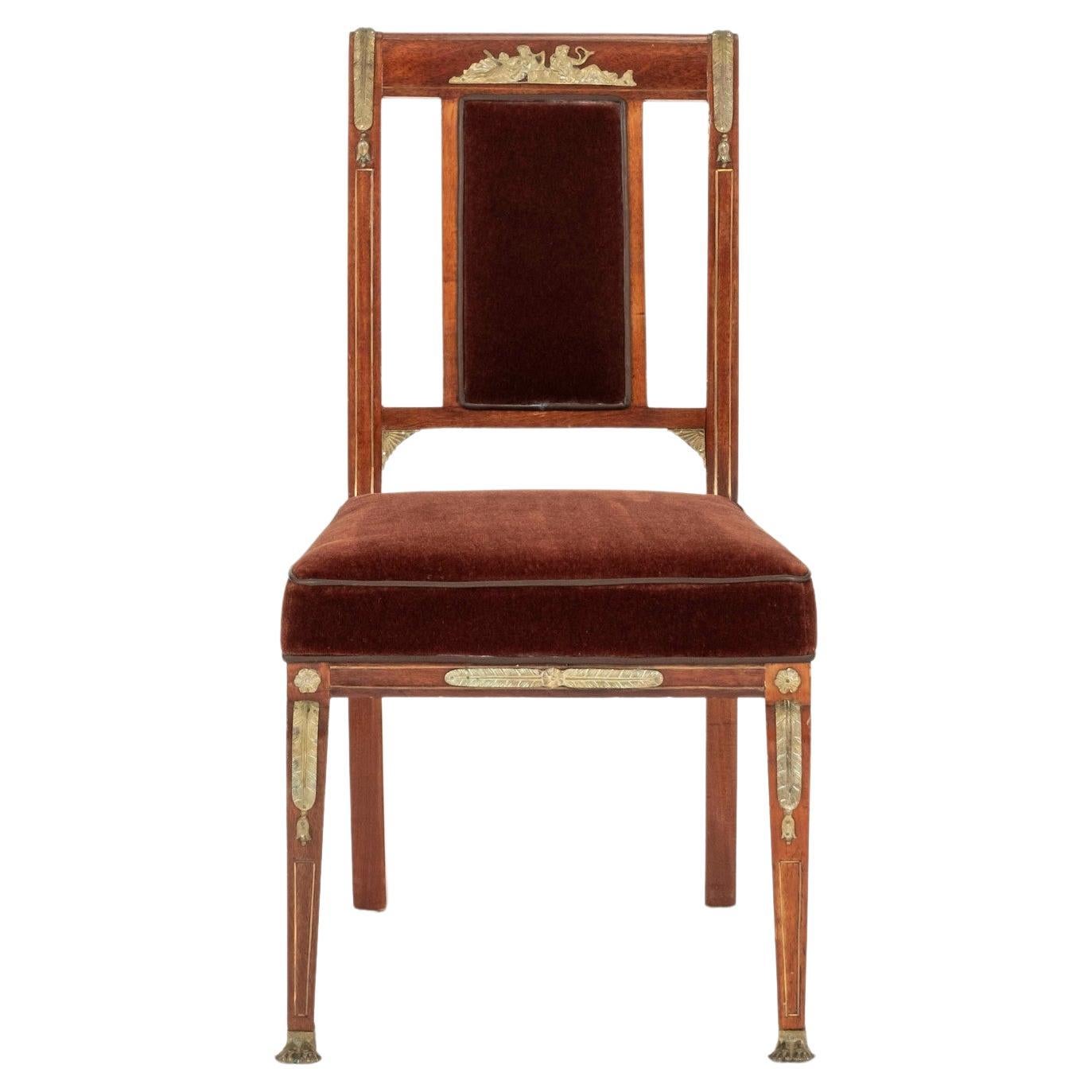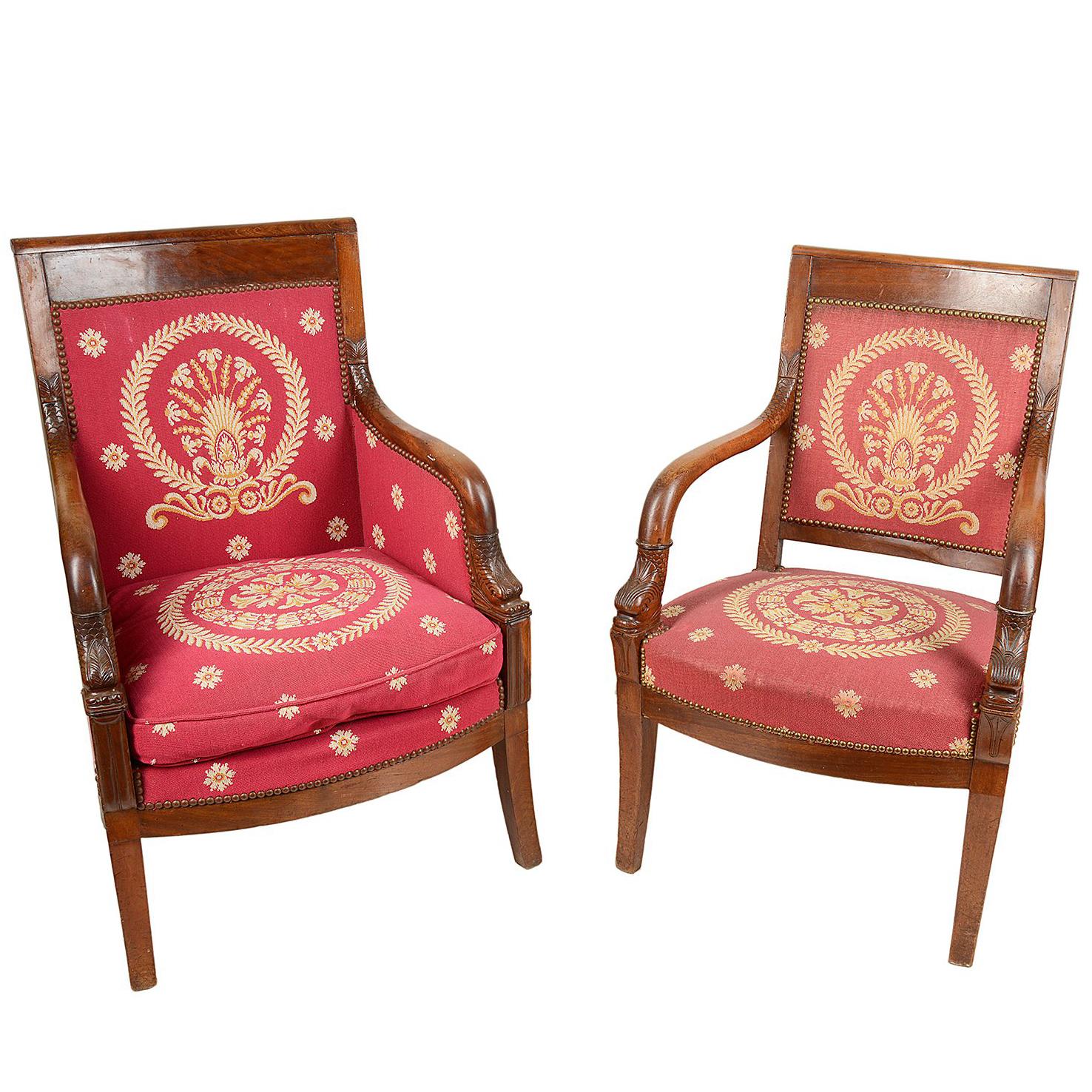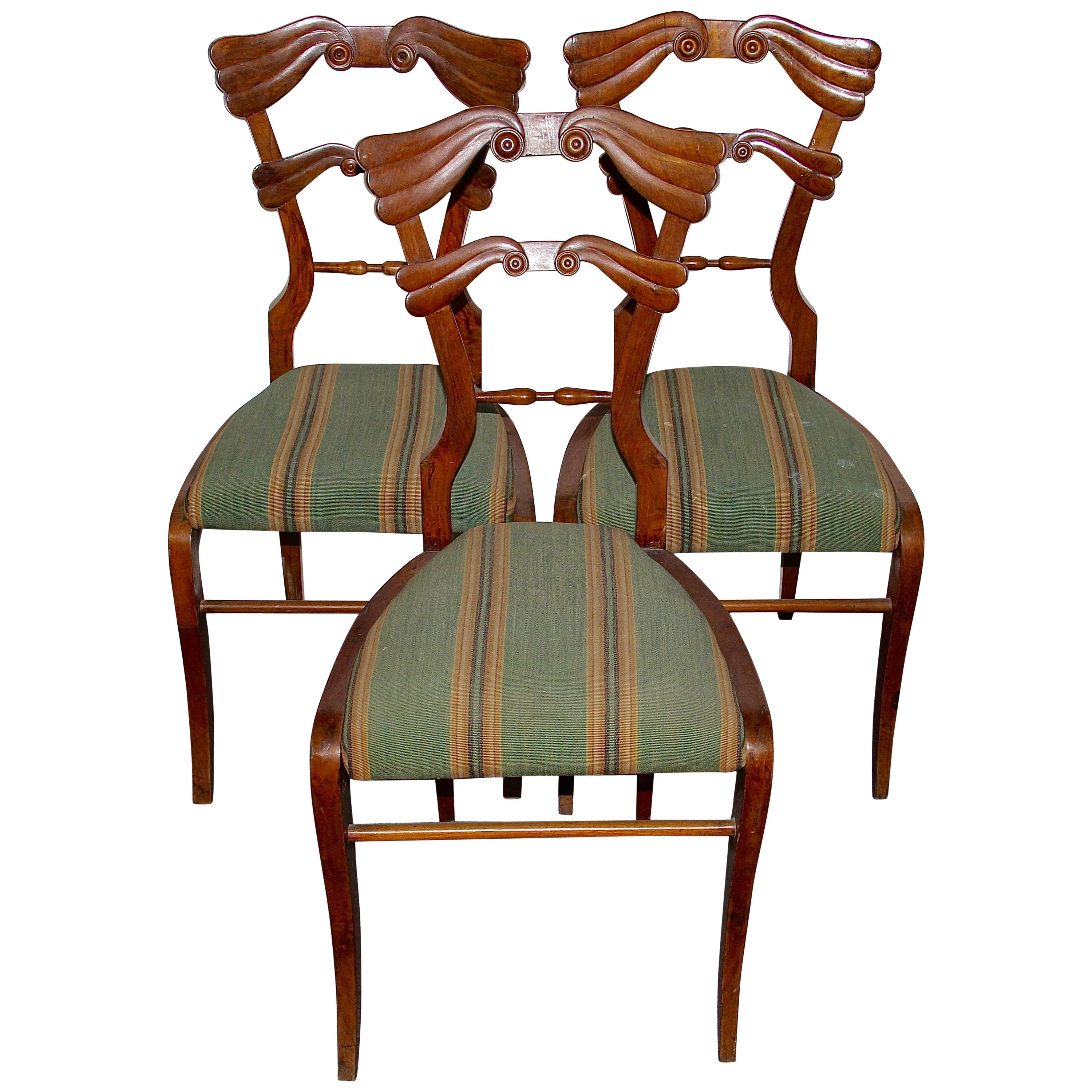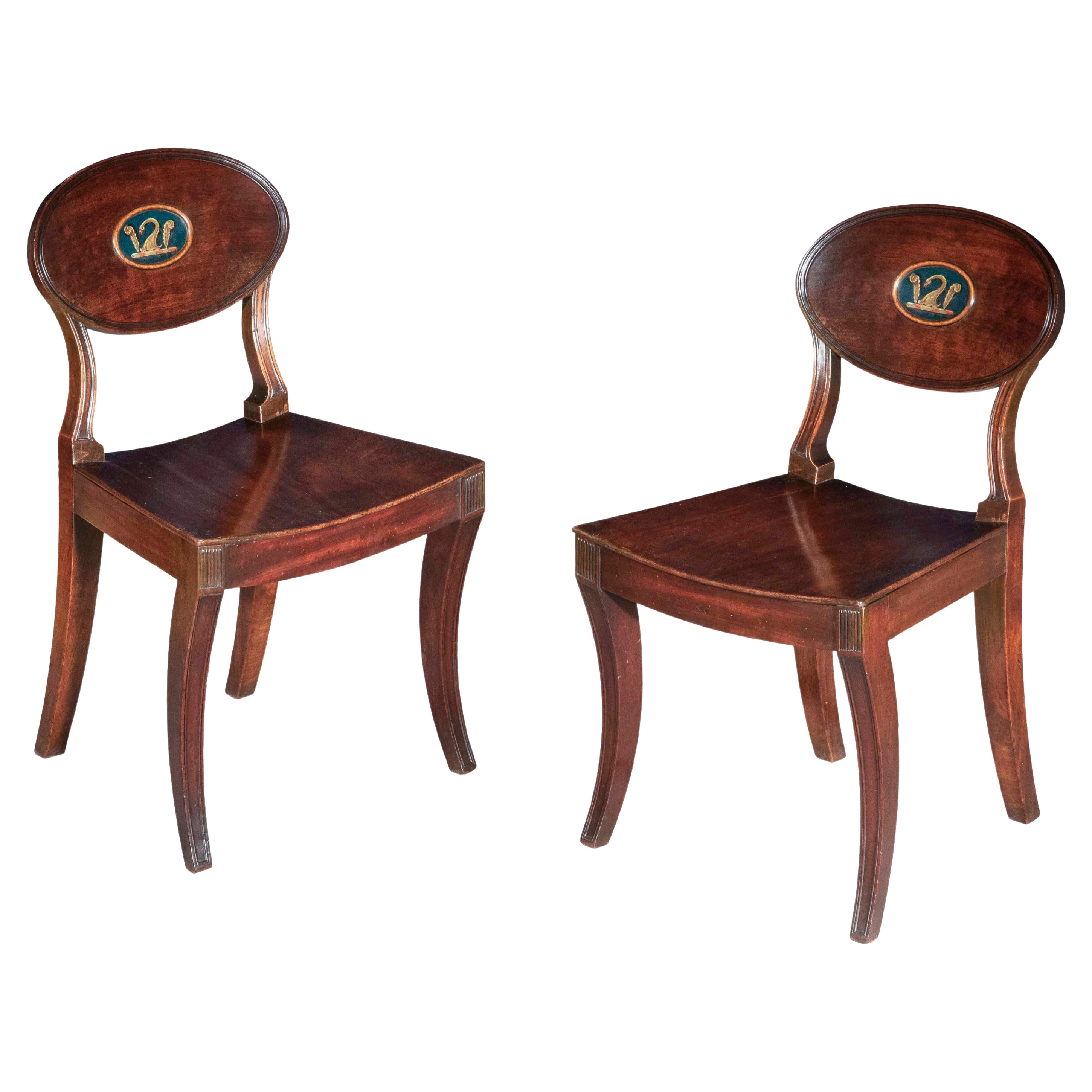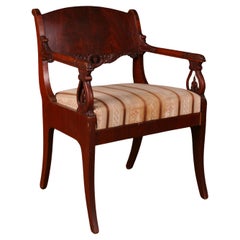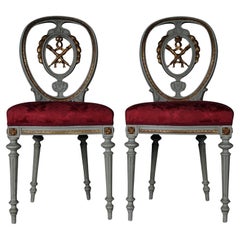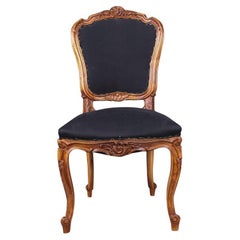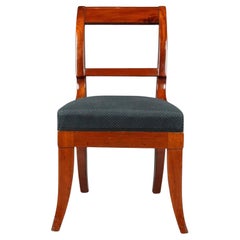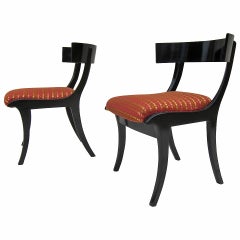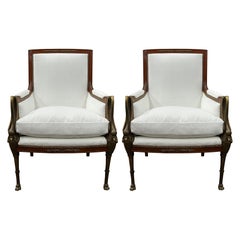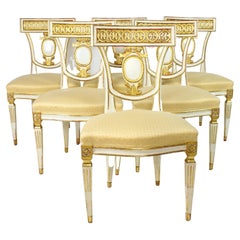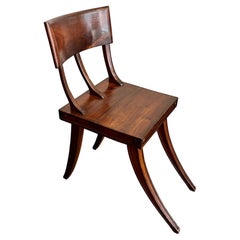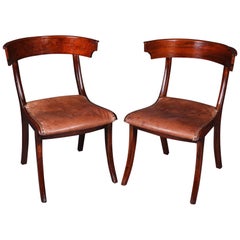
19th Century Empire Pair of Klismos Chair
View Similar Items
Want more images or videos?
Request additional images or videos from the seller
1 of 11
19th Century Empire Pair of Klismos Chair
About the Item
- Dimensions:Height: 30.71 in (78 cm)Width: 21.66 in (55 cm)Depth: 22.05 in (56 cm)
- Sold As:Set of 2
- Style:Empire (Of the Period)
- Materials and Techniques:
- Place of Origin:
- Period:
- Date of Manufacture:circa 1820
- Condition:Wear consistent with age and use.
- Seller Location:Berlin, DE
- Reference Number:1stDibs: LU2528323391632
About the Seller
4.8
Gold Seller
Premium sellers maintaining a 4.3+ rating and 24-hour response times
Established in 1981
1stDibs seller since 2017
480 sales on 1stDibs
Authenticity Guarantee
In the unlikely event there’s an issue with an item’s authenticity, contact us within 1 year for a full refund. DetailsMoney-Back Guarantee
If your item is not as described, is damaged in transit, or does not arrive, contact us within 7 days for a full refund. Details24-Hour Cancellation
You have a 24-hour grace period in which to reconsider your purchase, with no questions asked.Vetted Professional Sellers
Our world-class sellers must adhere to strict standards for service and quality, maintaining the integrity of our listings.Price-Match Guarantee
If you find that a seller listed the same item for a lower price elsewhere, we’ll match it.Trusted Global Delivery
Our best-in-class carrier network provides specialized shipping options worldwide, including custom delivery.More From This Seller
View All19th Century Empire Style a Russian Armchair
Located in Berlin, DE
Solid mahogany. Straight frame on saber-shaped legs with laid sheet. Strongly curved supports for slightly rising armrests. High-profile, contoured backrest frame with a wide finish....
Category
Antique 19th Century Russian Empire Armchairs
Materials
Mahogany
19th Century Pair of Chairs Louis Seize XVI, 1880
Located in Berlin, DE
Solid wood, colored and gilded. Cambered and carved frame on carved, tapering legs. Oval backrest frame with rich carving which is partially gilded. The seating area has a Classic, C...
Category
Antique 19th Century French Louis XVI Chairs
Materials
Wood
$2,666 Sale Price
20% Off
19th Century Rococo Walnut Chair
Located in Berlin, DE
Rococo chair walnut, circa 1870
Solid walnut. Richly ornate body on curved legs.
(C-121).
Category
Antique 19th Century Chairs
Materials
Fabric, Nutwood
$904 Sale Price
20% Off
19th Century Biedermeier Style Mahogany Chair
Located in Berlin, DE
Very elegant Biedermeier chair circa 1825 mahogany.
Solid mahogany. Trapezoidal frame on saber-shaped legs. High-profile, profile-backed backrest Framing with wide top and middle web...
Category
Antique 19th Century German Biedermeier Chairs
Materials
Wood, Mahogany
$1,366 Sale Price
20% Off
19th Century Biedermeier Curving Backrest Chair
Located in Berlin, DE
Biedermeier chair, circa 1845.
Solid wood with red cover. Rear legs saber-shaped. Wide curving backrest.
(C-127).
Category
Antique 19th Century German Biedermeier Chairs
Materials
Fabric, Wood
Very Elegant Biedermeier Chair, Birch, 19th Century
Located in Berlin, DE
Solid birch wood. Slightly trapezoidal frame on also slightly saber-shaped legs. Rectangular, profiled backrest framing, ebonized sprout wood in the center. Extra professional and hi...
Category
Antique 19th Century German Biedermeier Chairs
Materials
Birch
You May Also Like
Pair of 19th Century Klismos Chairs
Located in New York, NY
A pair 19th century Danish Klismos chairs. Collected in Copenhagen elegant pair of late 19th century Danish Klismos Chairs. Ebonized hardwood wi...
Category
Antique 19th Century Danish Chairs
Materials
Hardwood
$4,200 / set
Pair Of 19th Century French Empire Chairs
Located in Houston, TX
Pair Of 19th Century French Empire Chairs.
Offered is a lovely pair of early 19th century French period Empire chairs, fauteuils or side chairs. This pair of chairs are adorned with ...
Category
Antique Early 19th Century French Empire Chairs
Materials
Bronze
$11,850 / set
Late 19th Century Set of Six Italian Neoclassical Klismos Empire Dining Chairs
Located in Berlin, DE
Very elegant late 19th century set of six Italian Neoclassical Klismos shaped Empire side or dining chairs:
standing on four tapering and partially fluted legs topped by paterae ca...
Category
Antique Late 19th Century Italian Empire Dining Room Chairs
Materials
Wood
" Klismos"chair, 19th century
Located in Paris, Ile-de-France
"Klismos" chair
Mahogany,
Of unusual design, the chair has a curved back attached to the seat by a triple support,
Square seat, saber feet.
England or Northern Europe,
mid or late 19th century
A design developed by the Greeks in the 5th century BC, the Klismos chair...
Category
Antique 19th Century English Neoclassical Chairs
Materials
Wood
Danish 19th Century Antique Leather Klismos Chairs, set of 2
Located in Store Heddinge, DK
A beautiful 19th-century oak Klismos chair, crafted in Denmark in the around 1860s. The design, featuring a wide, curved backrest and sabre legs, harkens back to Ancient Greece (5th ...
Category
Antique 19th Century Danish Empire Chairs
Materials
Faux Leather, Beech, Oak
Pair of Klismos Chairs, Early 19th Century, George Oakley - 4 Pairs Available
By George Oakley
Located in Richmond, London
An exceptional pair of Regency period chairs, with a well-shaped 'Klismos' outline and unusually generous proportions, attributed to George Oakley of Bond Street. London, circa 1810.
Four pairs available: to purchase a set of eight chairs, please select quantity 4 pairs. Priced per pair.
Why we like them:
With front legs unusually splayed in two dimensions, this design is one of the most sophisticated examples from the Regency period. Unusual in form, subtle in ornamentation, and outstanding in quality, these chairs display the decorative techniques of cabinetmaking, rather than joinery. The veneers and Greek-key brass inlays cover the seat rails and front leg joints—a highly unusual feature for chairs—demonstrating superb cabinetmaking skills and suggesting a high-end workshop origin.
Attribution:
The extremely rare ‘double-splayed’ front legs, derived from ancient Greek Klismos seats, along with exquisite brass inlays, contribute to these chairs' distinctive elegance. This form, along with certain decorative elements, aligns with other pieces traditionally attributed to George Oakley (1773–1840), one of the foremost London cabinetmakers of the period.
The scrolling foliage pattern of the inlays on the back tablets of these chairs matches the decoration on a spider-leg sofa table illustrated in F. Collard’s Regency Furniture (Woodbridge, 1987, p. 317) and Mallett’s The Age of Matthew Boulton - Masterpieces of Neo-classicism (London, 2000, pp. 112-113). This table, belonging to a group of furniture firmly attributed to Oakley, likely originates from the same workshop as these chairs. An identically decorated daybed, en suite with these chairs, appears in the same Mallett catalogue (pp. 94-95). A magnificent center table, featuring the same inlays and possibly from the same suite, was sold at Christie’s, New York, 29 January 1994, lot 342.
An identical pair of chairs is illustrated in Ronald Phillips’s Fine Antique English Furniture 2018, pp. 158-159.
George Oakley:
George Oakley’s firm produced stylish Grecian-inspired furniture around the turn of the 19th century, pioneering ‘Buhl’ inlay, a decorative technique that regained popularity in the Regency’s early years. Fashionable materials like rosewood, mahogany, and calamander were often used in Oakley's furniture, combined with satinwood, ebony inlays, brass stars, and metal bands. His high-class furniture earned him a royal appointment and a reputation for fine craftsmanship.
Visits by the royal family to Oakley's Bond St. Showrooms are recorded as in the Morning Chronicle of 1799. In May, “the ROYAL FAMILY, with the PRINCE and PRINCESS of ORANGE did Mr. OAKLEY the honor of viewing his Printed Furniture...
Category
Antique Early 19th Century English Regency Chairs
Materials
Brass
